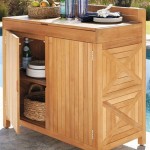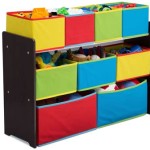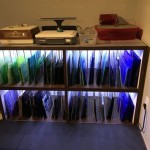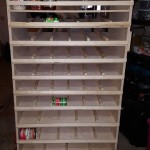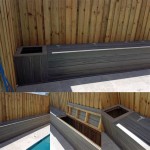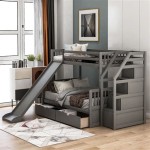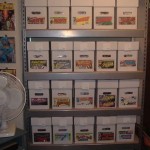DIY Single Bed Frame with Storage: A Practical Guide
Maximizing space in small bedrooms often presents a challenge. One effective solution is building a DIY single bed frame with integrated storage. This project allows for customization to suit specific needs and available space, while also providing a cost-effective alternative to purchasing pre-made furniture. This article will outline a comprehensive guide to constructing a single bed frame with storage, focusing on design considerations, material selection, tools required, and step-by-step construction instructions.
Design and Planning
Before commencing any construction, meticulous planning is paramount. This phase involves determining the overall dimensions of the bed frame, the type and configuration of storage compartments, and the aesthetic style desired. The standard dimensions for a single bed are typically 39 inches wide by 75 inches long. However, adjustments can be made to accommodate specific mattress sizes or room constraints. It is important to consider the thickness of the mattress when calculating the overall height of the bed frame to ensure comfortable access.
Storage options can range from simple drawers to lift-up platforms or a combination of both. Drawers are relatively easy to construct and provide accessible storage for clothing, linens, or other personal items. Lift-up platforms offer a larger storage area, ideal for storing bulky items such as seasonal clothing or spare blankets. The choice of storage type will influence the overall design and construction process.
Furthermore, the aesthetic style of the bed frame should complement the existing decor of the bedroom. Options include a minimalist design with clean lines, a rustic style using reclaimed wood, or a more contemporary design with painted or stained finishes. Consider the color scheme of the room and select materials and finishes that harmonize with the existing aesthetic.
Once the design is finalized, create detailed plans with precise measurements. This includes drawings of the bed frame from various angles, indicating the dimensions of each component and the placement of storage compartments. A cutting list should also be prepared, listing the dimensions and quantity of each piece of lumber required. This detailed planning will minimize errors and ensure a smooth construction process.
Material Selection and Preparation
The choice of materials will significantly impact the durability, stability, and aesthetic appeal of the bed frame. Solid wood, such as pine, oak, or maple, is a popular choice due to its strength and natural beauty. Plywood or MDF (Medium-Density Fiberboard) can also be used for certain components, such as drawer bottoms or side panels, to reduce weight and cost. However, ensure that plywood or MDF is of sufficient thickness to provide adequate support.
When selecting lumber, inspect each piece for defects such as knots, cracks, or warping. Choose straight, clear lumber that is free from imperfections. The moisture content of the wood should also be considered, as excessive moisture can lead to warping or cracking after construction. Kiln-dried lumber is recommended for interior projects to minimize moisture-related issues.
Before commencing construction, all lumber should be properly prepared. This involves cutting the lumber to the dimensions specified in the cutting list. Use a circular saw, table saw, or miter saw for accurate and clean cuts. After cutting, sand all surfaces smooth using sandpaper of varying grits. Start with a coarse grit (e.g., 80-grit) to remove any rough edges or imperfections, and then progress to finer grits (e.g., 120-grit, 220-grit) for a smooth finish. Dust off the sanded surfaces with a tack cloth before applying any finishes.
For components made from plywood or MDF, consider applying edge banding to conceal the exposed edges. Edge banding is available in various materials, such as wood veneer, PVC, or melamine. It can be applied using contact cement or an iron-on adhesive. Trim the excess edge banding with a utility knife or edge trimmer for a clean, professional finish.
Fasteners play a crucial role in the structural integrity of the bed frame. Wood screws are commonly used for joining wood components. Select screws of appropriate length and gauge for the thickness of the lumber being used. For added strength, consider using wood glue in conjunction with screws. Clamps should be used to hold the pieces together while the glue dries.
Construction Process
The construction process can be divided into several stages: building the bed frame structure, constructing the storage compartments, and assembling the final bed frame.
Building the Bed Frame Structure: The bed frame structure typically consists of four side rails and two end rails. These rails are joined together to form a rectangular frame that supports the mattress. The rails can be joined using various methods, such as screws, wood glue, or mortise and tenon joints. Screws are the simplest method for beginners. Drill pilot holes before inserting the screws to prevent the wood from splitting. Ensure that the screws are countersunk so that they are flush with the surface of the wood.
Internal support beams are necessary to provide additional support for the mattress. These beams should be spaced evenly across the width of the bed frame. The number of support beams required will depend on the thickness of the mattress and the weight of the occupants. The support beams can be attached to the side rails using screws and wood glue. Angle brackets can also be used for added strength.
Constructing the Storage Compartments: The construction of the storage compartments will depend on the chosen design. For drawers, construct a simple box frame consisting of four sides and a bottom. The sides can be joined using screws, wood glue, or dovetail joints. Dovetail joints are more complex but provide a stronger and more aesthetically pleasing joint. The drawer bottom can be made from plywood or MDF and attached to the sides using screws or staples. Drawer slides should be installed on the sides of the drawer and the inside of the bed frame to allow for smooth opening and closing.
For lift-up platforms, construct a hinged frame that can be lifted to access the storage area. The frame can be made from solid wood or plywood. Hinges should be strong enough to support the weight of the mattress and the platform. Gas struts can be installed to assist with lifting the platform and holding it in the open position.
Assembling the Final Bed Frame: Once the bed frame structure and storage compartments are constructed, the final assembly can begin. Attach the storage compartments to the bed frame structure using screws and wood glue. Ensure that the compartments are aligned properly and securely fastened. Install any hardware, such as drawer pulls or handles. Apply the desired finish to the bed frame. This can include staining, painting, or varnishing. Allow the finish to dry completely before placing the mattress on the bed frame.
Finishing and Hardware Considerations
The finishing stage is crucial for protecting the wood and enhancing its aesthetic appeal. A variety of finishes are available, each with its own advantages and disadvantages. Staining can be used to enhance the natural grain of the wood and add color. Paint provides a more opaque finish and can be used to match the existing decor of the room. Varnish provides a protective layer that is resistant to scratches and moisture.
Before applying any finish, the wood surface should be properly prepared. This involves sanding the surface smooth and removing any dust or debris. Apply a primer before painting to improve adhesion and provide a uniform base. Apply the finish in thin, even coats, allowing each coat to dry completely before applying the next. Sand lightly between coats to achieve a smooth finish.
Hardware selection plays a significant role in the functionality and aesthetics of the bed frame. Drawer slides should be chosen based on the weight capacity and desired smoothness of operation. Hinges should be durable and strong enough to support the weight of the lift-up platform. Drawer pulls and handles should be chosen to complement the overall design of the bed frame. Consider the material, style, and finish of the hardware when making your selection.
Safety is a paramount consideration when constructing any furniture. Ensure that all screws are properly tightened and that there are no sharp edges or splinters. If children will be using the bed frame, consider adding corner protectors to prevent injuries. Periodically inspect the bed frame for any signs of wear or damage and make any necessary repairs.

Great Woodworking Project How To Build A Single Bed Frame With 3 Storage Drawers

Diy Storage Bed How To Make A Cube Base Claire Douglas Styling

6 Step Bed With Storage Project Compact Solution Diy Projects For Everyone

Diy Twin Platform Bed With Storage

Single Wooden Cabin Bed Frame With 4 Drawers No Mattress

Diy Twin Platform Bed With Storage

Expedit Single Bed

Diy Storage Bed How To Make A Cube Base Claire Douglas Styling

Diy Storage Bed Projects Build A Frame With The Budget Decorator

Tatami Platform Storage Bed Super Single Size 6 Open Shelves Assorte Picket Rail Custom Sofas Furniture
Related Posts

